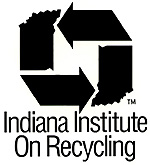
CASE STUDY No. 9642
KEY WORDS BENTONITE CLAY, BLEACHING EARTH; REUSE AS ANIMAL FEED, FERTILIZER
Lever Brothers Company
1200 Calumet Avenue
Hammond, IN 46320
Contact: Mohammad Z. Babar, Environmental Coordinator Tel: 219-473-7340. Fax: 219-659-4410
Summary
Instead of landfilling 1,100 tons per year of bentonite clay used in producing soap, Lever Brothers found buyers of the spent material, saving $33,000 a year in disposal expense.
Action
The Lever Brothers plant in northwest Indiana manufactures soap bars--Dove, Caress, Lever 2000, Lux, LifeBuoy, and Shield. Bentonite clay is used at the beginning of the soapmaking process to remove undesirable color and odor from the basic ingredients of coconut oil and tallow. The clay, also known as bleaching earth, adsorbs impurities in the oils in a reactor under vacuum.
Previously, Lever Brothers disposed of spent bleaching earth as a special waste at a cost of $30 a ton. But the spent clay contains useful materials--residual oils and fatty acids, by analysis, 12% fatty acid and 12% to 20% organic carbon. When the soap company asked its supplier of bentonite for suggestions about doing something better with the used clay than burying it in an industrial landfill, Lever Brothers was referred to a broker of livestock feed in central Illinois that would buy the material as a source of cheap nutrients for blending into animal feed. Although the cost of shipping the bleaching earth about 100 miles negated earnings from sale of the material, Lever benefitted immediately by avoiding the $30-per-ton disposal charge it had been paying.
Later the company found another alternative use of spent bleaching earth--as a soil amendment to increase the fertility of corn fields. And this time, haul distance was cut in half, to about 45 miles.
Payback
Since the spent bleaching earth accumulated at Lever Brothers in a standard bulk container and could be hauled anywhere, switching from landfill disposal to beneficial reuse required only a change of procedure and virtually no investment except staff time to make arrange-ments. The reduction in landfilling cost took effect immediately, however. Over the course of a year, the company saved about $33,000 (1,100 tons x $30/ton).
An irony of this case study is that beneficial reuse of spent bleaching earth has
been occurring in the food industry for many years. Knowledge of this superior management
practice reached Lever Brothers only because the company took the initiative to improve on
"business as usual." The company practices waste prevention in many ways.
"My goal," says the environmental coordinator of the Indiana plant, "is to
eliminate all of our waste."
